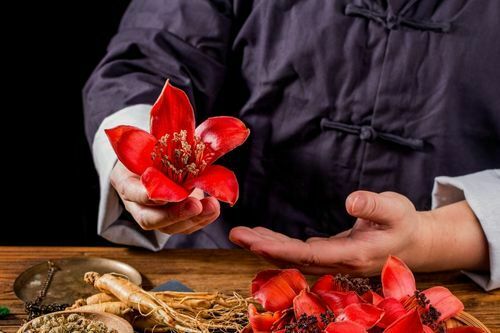Table of Contents
Did you know that there are approximately 400,000 plant species on the planet? Many thousands of plants need identification and classification. We know little about most plants and flowers. Keep reading to learn more about the study of flowers.
What is the study of flowers?

The anthology is the study of plants and flowering plants. ‘Anthos’ is the Greek word for flower, and ‘logia’ is the Greek word for collection. The anthology is the branch of biology that explores the flower’s structure, parts, and functions.
Angiosperms’ distinctive reproductive structure is the flower. The common term ‘flower’ refers to a specific reproductive structure in color and form.
Flowers offer a seemingly limitless variety of color, size, form, and anatomical arrangement combinations. They range in size from tiny blossoms to enormous blooms. Individual flowers in some plants, such as poppy, magnolia, tulip, and petunia, are significantly larger and showy and produced singly, whereas, in others, such as aster, snapdragon, and lilac, the individual flowers may be tiny and borne in a distinctive cluster known as an inflorescence.
Forms and types of flowers
Each flower consists essentially of a floral axis bearing the reproductive organs (stamens and pistils) and usually accessory organs (sepals and petals); the latter may serve to both attract pollinating insects and protect the reproductive organs. The floral axis is an extensively modified stem; unlike vegetative branches, which bear leaves, it usually contracts so that the flower parts are crowded together on the stem tip, known as the receptacle.
The arrangement of flowers is typically in whorls (or cycles). They can also arrange themselves spirally, particularly if the axis elongates. There are typically four distinct whorls of flower parts-
- An outer calyx composed of sepals
- The corolla comprises petals
- The androecium, or group of stamens
- The gynoecium consists of pistils.
Some essential terms in the study of flowers are as follows.
Perianth
The perianth, or floral envelope, comprises sepals and petals.
Sepals and petals
The sepals are typically greenish and resemble small leaves, whereas the petals are colorful and showy. Tepals are indistinguishable sepals and petals, such as those found in lilies and tulips.
Pistil
The pistil is the female part of the flower that consists of the stigma, style, and ovary.
Stamen
The male part of the plant, consisting of the anther and the supporting filament, is known as the stamen.
Pollen
Pollen is a fine powdery substance produced by male flower parts that cause plants to produce seeds.
Pollinators
Insects and birds that spread pollen from one plant to another are known as pollinators.
Pollination
The stamens and pistils play a direct role in seed production. It contains microsporangia (spore cases) in which numerous microspores (potential pollen grains) develop; the pistil contains ovules, each containing an egg cell. When a microspore germinates, it is known as a pollen grain. When the pollen sacs inside an anther of a stamen mature and are ready for release, the anther sheds its pollen. The process by which pollen grains transfer from the anther to the pistil’s stigma is known as pollination. It is necessary for fertilization.
Types of pollination
Below are the two types of pollination.
Self-pollination
Self-pollination occurs when a stigma is pollinated by pollen from the same flower or another flower on the same plant. Self-pollination occurs in many species, but in others, perhaps the majority, it is prevented by adaptations such as flower structure, self-incompatibility, and stamens and pistils maturing at different times in the same flower or plant.
Cross-pollination
Cross-pollination refers to the transfer of pollen from one plant’s anther to the stigma of another plant of the same species. Insects and wind causes Cross-pollination various other agents are also responsible for it.which are . Wind-pollinated flowers are distinguished by their lack of color, odor, or nectar, whereas you can determine animal-pollinated flowers by their structure, color, or production of scent or nectar.
Significance of flowers

Flower messages have evolved. They are not only visually appealing but also play an essential role in the health of your plants. Let us talk about the significance of flowers in our lives.
Best gift for someone special
Flowers are real symbols of love, making them the ideal gift to give to loved ones on special occasions. Because flowers are everyone’s favorite, you can give them to anyone on almost any occasion. Whether you want to wish a friend a happy birthday or honor your mother on mother’s day, a bouquet is always appropriate. You can also choose a flower basket if you plan to surprise your lover on Valentine’s Day.
It helps release tension and anxiety
Flowers that are vibrant and joyful can elicit happy feelings and thus have an immediate effect on our mood. Therefore, flowers are one of the best options to give when a loved one becomes ill. Also, according to scientific studies, flowers and plants around hospitals can naturally cure patients by reducing their stress levels and anxiety.
Medicinal use
The most significant advantage is that flowers contain entirely natural healing properties. Ayurveda uses various flowers as healing properties. You can make patients feel better by giving them fresh and beautiful flowers.
Key takeaways
- The study of flowers is known as the anthology. The anthology explores a flower’s structures, parts, and functions.
- Flowers have many essential terms, such as petals, sepals, pollen, stamen, pistil, and more.
- A flower plays a significant role in everyday life, from the best gift for someone special to having healing properties. A beautiful flower is a key to a lovely day.
Did you find this blog informative? If so, please share your thoughts in the comments section below. Click here to contact us for more information on the study of flowers. We would be happy to assist you with your queries.
Liked this blog? Read next: Learn about the different types of plants!
FAQs
Q1. What is the study of floriculture?
Answer- Floriculture, also known as flower farming, studies the cultivation and marketing of flowers and foliage plants. Floriculture is the practice of growing flowering and ornamental plants for retail sale or use as raw materials in the pharmaceutical, cosmetic, and cologne industries.
Q2. What is horticulture?
Answer- Horticultural science is the only plant science that considers plant science and aesthetics. It is the science and art of growing, improving, and commercializing edible fruits, vegetables, flowers, herbs, and ornamental plants.
Q3. Who is a floriculturist?
Answer- Floriculturists grow flowering and ornamental plants for gardens, the floral industry, and export. The person studies flowering plants and also looks after them.







